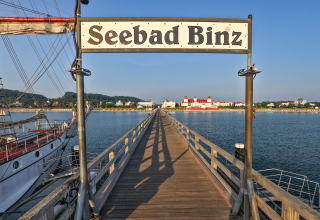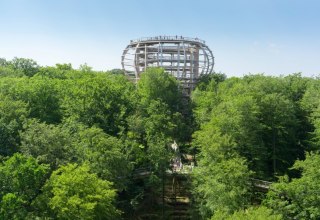The romanticists Caspar David Friedrich, Friedrich August von Klinkowström, Karl Gottlieb Lappe and Philipp Otto Runge, who all came from Vorpommern, are the focus of the themed bike route, which passes important stations in the lives and motifs of these protagonists along a total of 54 kilometers. These include original sites such as the castle complex in Ludwigsburg, the vicarage in Wusterhusen and the harbors in Vierow and Wolgast. At ten designated stations along the popular Baltic Sea Cycle Route, information boards provide exciting background knowledge and give tips for further natural and cultural highlights on and along the route.
Officially, the tour starts at the Eldena monastery ruins, Caspar David Friedrich's favorite motif. However, a detour to the center of the University and Hanseatic City of Greifswald beforehand is highly recommended. The route continues past fields and with a view of the Dänische Wiek, via the small village of Kemnitz to Ludwigsburg Castle, Klinkowström's birthplace. Here it is worth taking a first break as well as a detour to the nearby natural beach and coastal forest before heading to the next designated stop, the village of Vierow. The route leads to the seaside resort of Lubmin on a roadside cycle path or a narrow country lane and hiking trail along the coast. After an extensive lunch and swimming break and a detour to the nearby village of Wusterhusen, the rustic fishing village of Freest welcomes the cyclists, from where the last major stage to Wolgast starts. Along the road and without major climbs, the cyclists pass the stations Wolgast Dreilindegrund and Wolgast Hafen before reaching the day's destination, the Museum Rungehaus in Wolgast, the birthplace of the artist Philipp Otto Runge.





























